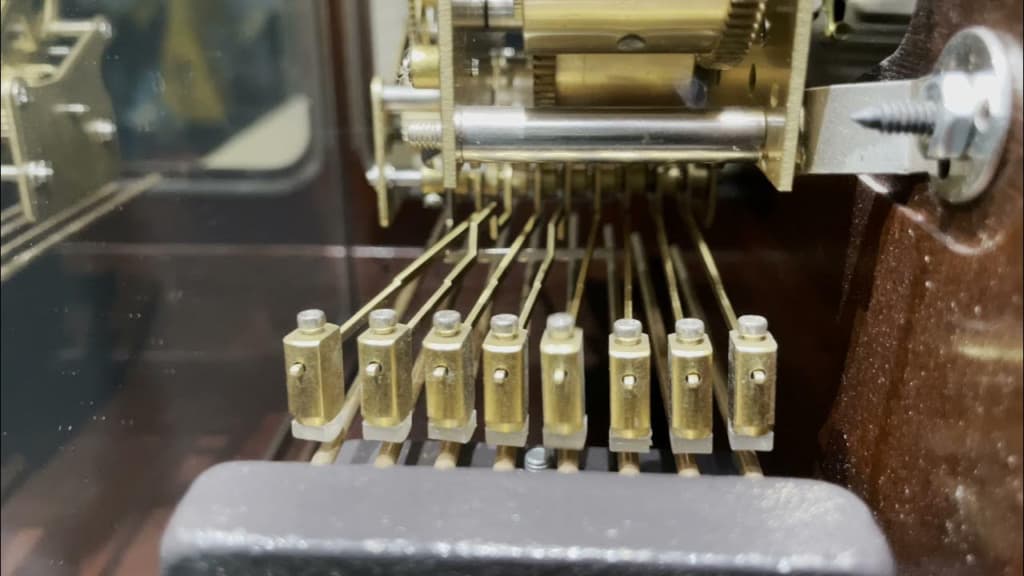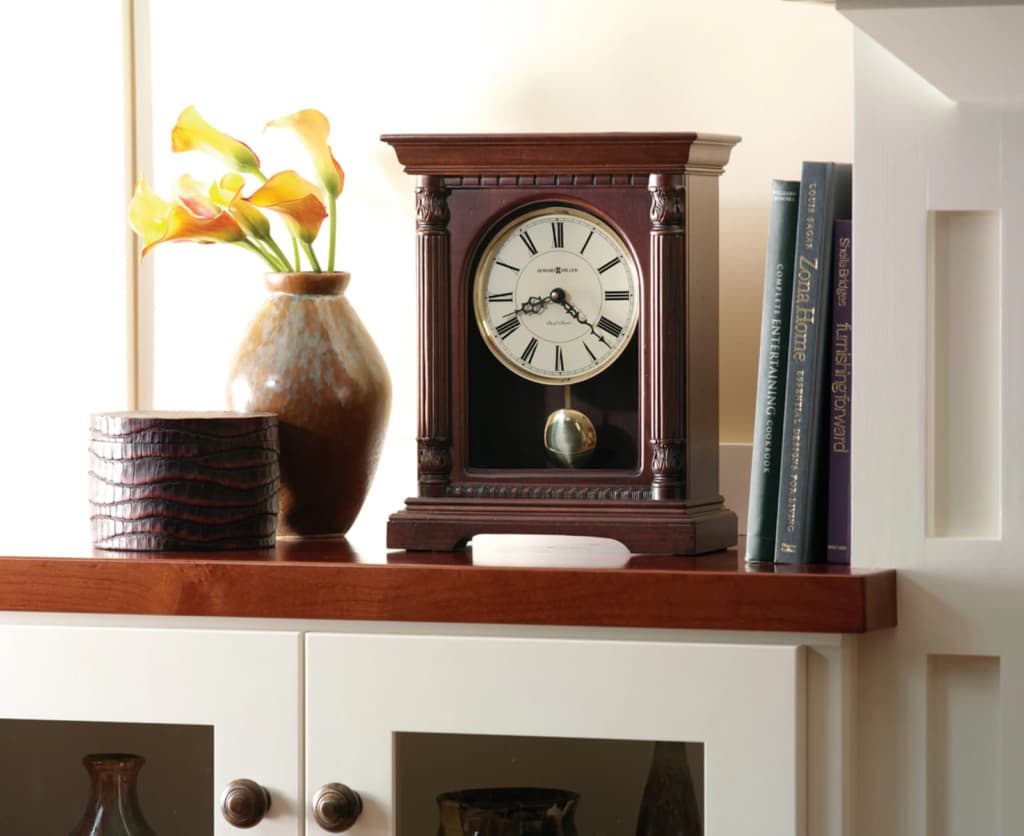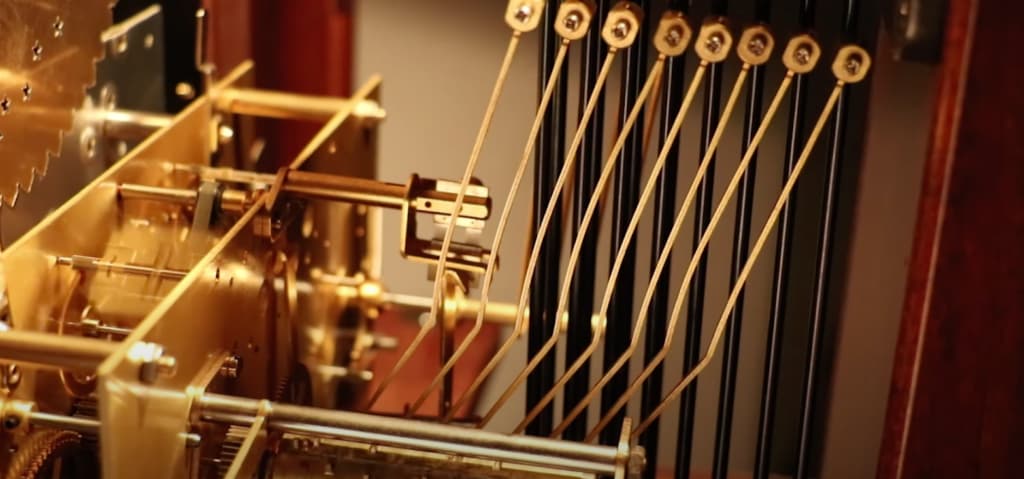From the soothing tick-tock of an old pendulum clock to the majestic chime of a grandfather clock, the sounds and melodies emitted by timekeeping devices have not only kept track of hours but have also woven history with harmonies. Let’s embark on a sonic journey exploring these melodious timekeepers.
The Origins of Clock Melodies
In the heart of ancient civilizations, timekeeping was more than just a utility. It was an art. While sundials and water clocks marked the passage of hours, it wasn’t until mechanical clocks that the world truly heard time.
European Monasteries
During the Middle Ages, European monasteries were the hubs for advancements in horology. The bells, tied to monastic schedules, played an integral role in shaping what we know today as clock chimes.
Asia’s Audible Art
Asian timekeepers had their unique set of sounds. From the soft gong of Chinese water clocks to the rhythmic beats of Japanese temple clocks, the East offered a varied palette of musical time.
Evolution of Melodies Over Time
Time, being ever-evolving, led to the evolution of clock melodies as well.
- Cuckoo Clocks: Originating from Germany’s Black Forest, these clocks brought a touch of nature indoors with the iconic “cuckoo” sound every hour;
- Grandfather Clocks: Also known as long-case clocks, they’re renowned for their deep, resonant melodies, often playing chimes like Westminster or Whittington;
- Mantel Clocks: These compact timepieces, designed for mantelpieces, offered a wide range of tunes, blending perfectly with the room’s ambiance;
- Digital Era and Beyond: With the advent of digital technology, the world saw a shift from mechanical chimes to recorded tones, each having its charm.
Clock Melodies Across Cultures
Clock melodies are as diverse as the cultures they come from. They tell tales of time, traditions, and territories.
Swiss Alp Echoes
The Swiss, renowned for their watchmaking prowess, also created wall and cuckoo clocks that echoed Alpine melodies, capturing the essence of their serene landscapes.
American Ingenuity
The USA, in its industrial age, saw the birth of iconic American clock brands. These clocks, while maintaining timekeeping precision, also introduced melodies that resonated with the American spirit.
Indian Time Tunes
India, with its vast cultural tapestry, had clocks that borrowed melodies from regional music, creating a symphony that’s uniquely Indian.
Sounds, Science, and Significance
Have you ever pondered why certain clock melodies give a sense of calm while others instill urgency? There’s a science to it!
- Frequency and Feel: Lower frequencies often result in deeper, calming sounds (like a grandfather clock), while higher frequencies can feel sharp and alerting;
- Rhythm and Routine: Regular, rhythmic melodies can instill a sense of routine, while erratic melodies can signify unpredictability;
- Decoding Digital: Digital clock melodies, often customizable, can range from nature sounds to modern pop tunes, reflecting the user’s personality.
Modern Day Clock Melodies & Technology
Today, the harmony of time has embraced the marvels of technology.
- Smart Clocks: Today’s smart clocks can simulate sunrise, play your favorite tunes, or even mimic the morning sounds of a far-off land, all customizable to your liking;
- Environmental Adaptations: Modern clocks can adjust their melodies based on the environment, ensuring the sound is neither too loud nor too soft;
- Custom Compositions: Advanced clocks now allow users to compose or import their melodies, making each chime personal.

Clock Melodies in Pop Culture
The influence of clock melodies extends beyond the confines of horology and has found its way into the vast realm of pop culture. These chimes, tunes, and gongs have played pivotal roles in various artistic mediums, echoing stories of time and emotion.
Cinematic Moments
Think about the suspenseful climax of a thriller movie, where the dramatic ticking of a clock amplifies the tension. The eerie chime of a grandfather clock in a haunted mansion film setting can instantly evoke feelings of dread. In romantic movies, the soft chimes often mirror the passing moments between lovers, emphasizing fleeting time.
Literary Echoes
Literary works, too, have not remained untouched by the allure of clock melodies. In novels and poetry, the rhythmic ticking of a clock or the chime at midnight often symbolizes the inexorable march of time, hinting at themes of mortality, longing, and change.
Musical Inspirations
The realm of music has often turned to clock melodies for inspiration. From rock bands to classical orchestras, the timeless sound of ticking and chiming has been incorporated into compositions, resonating with the universal theme of time’s passage.
The Therapeutic Power of Clock Melodies
It’s fascinating to realize that clock melodies, apart from being time indicators, have therapeutic potential. The gentle rhythms and soft tones can have a calming effect, grounding the listener in the present moment.
Mindfulness and Meditation
As the world speeds up, many turn to mindfulness practices to slow down. Here, the rhythmic ticking of a clock can serve as an anchor, focusing the mind and aiding in meditation. The consistent sound acts as a reminder to remain in the present, assisting practitioners in achieving a deeper state of relaxation.
Sleep Aid
For many, the rhythmic sounds of a clock can be a lullaby. The consistent ticking or soft hourly chimes can provide a sonic background, drowning out other noises and helping individuals drift into sleep. Some modern clocks even come equipped with features allowing users to choose a variety of calming melodies, specifically designed to aid in sleep.
Memory and Nostalgia
For the elderly, especially those battling conditions like dementia, familiar clock chimes from their youth can evoke memories, providing comfort. The familiar tunes transport them back to simpler times, offering a respite from their current challenges.

The Sound Mechanics Behind Clock Melodies
A closer inspection into clock melodies reveals a delicate dance of mechanics and acoustics. The design of the melody often takes into account the type of clock, its material, and the desired resonance.
- Mechanical Chimes: Traditional clocks, especially grandfather clocks, use hammers striking rods or bells to create their iconic chimes. The length and material of the rods influence the pitch and duration of the sound. Brass rods, for instance, produce a clear, sharp sound, while steel rods give a more resonant tone;
- Quartz Movements: Modern clocks with quartz movements use electronic chimes. These clocks have speakers that play recorded melodies, allowing for a wider variety of tunes. Some even offer the option to upload custom melodies;
- Materials & Resonance: The body of the clock itself plays a role in sound quality. A wooden clock might have a warm, deep resonance, while a metal or glass clock can produce a sharper, clearer sound.
The following table provides a comparison of different clock types and their sound mechanics:
| Clock Type | Sound Mechanism | Material Influence |
|---|---|---|
| Grandfather | Hammers on rods/bells | Deep resonance with wooden body |
| Cuckoo | Bellows and pipes | Wooden echo, bird-like chirp |
| Quartz Mantel | Electronic chime | Varies based on body material |
| Digital Alarm | Recorded tones/sounds | Minimal influence on sound |
A Collector’s Guide to Clock Melodies
For enthusiasts and collectors, clock melodies aren’t just about telling time—they’re about preserving history and appreciating the nuances of horological art. If you’re venturing into collecting clocks for their melodies, here are some points to consider:
Historical Significance
Many clock melodies have historical backgrounds. For example, the Westminster chime is tied to the clock tower of the Houses of Parliament in London. Understanding this adds depth to a collector’s appreciation.
Craftsmanship
A closer look reveals the intricate craftsmanship behind each melody. The complexity of the mechanics, the precision of the chimes, and the design aesthetics all contribute to a clock’s value.
Restoration & Maintenance
Older clocks might require regular maintenance to keep their melodies sounding just right. Some might even need restoration, which should ideally be done by experts to preserve their authenticity.
Variety is Key
While starting a collection, it’s beneficial to have a variety of clocks—from different eras, regions, and mechanisms. This offers a richer understanding of the evolution of clock melodies.
List of Recommended Clocks for Melody Collectors:
- Black Forest Cuckoo Clock: A classic, known for its bird chirping every hour;
- Westminster Chiming Clock: Offers the iconic Westminster chimes every quarter hour;
- Seiko Quartz Mantel Clock: Modern craftsmanship with traditional melodies;
- Antique Chinese Bracket Clock: A glimpse into Asian horological art with distinct gongs.
Conclusion
Clock melodies are more than just auditory alerts of the passing hour. They’re a reflection of history, culture, science, and personal preference. As we move forward, these melodies will continue to evolve, but their essence will remain—a beautiful symphony of time.
FAQs
Different chimes can denote quarter hours, half hours, or full hours. They can also be switched based on preference.
Traditional mechanical clocks have set chimes. However, modern adaptations might offer some customization.
It’s a blend of tradition with technology. Many people find comfort in classic melodies, so manufacturers incorporate them in digital designs.
Yes, silent or non-chiming clocks are popular in some environments where disturbances need to be minimized.
Clock melodies in ancient times often served religious or civic purposes, announcing prayer times or public events.
